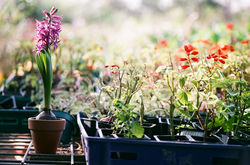Welcome to Beefarm
Fresh Farm & Family Fun
 |  |  |
|---|---|---|
 |  |  |
About Beekeeping
Beekeeping is caring and management of bee colonies in the artificial hive. Bees are raised for the honey, bee wax and other useful stuff. Honey bees also function as the pollinator for the fruits and the vegetables. The practice of raising honey bees is seen all around the globe.
Most of the honey which is produced around the globe are very delicious. Since the earlier days, honey extraction is done by using the smoke to calm down the honey bees. The technology of raising the bees was developed a lot which includes the artificial hive, raising the queen bees, honey extraction, and feeding.
In the earlier days, the beekeeping was using the natural swarms but nowadays this has been switched to the preparation of new colony using the existing bee colony. Also, the hives come with the good wax-foundation and starter comb for easy and quick bee raising.
With the advancement in technology, the disease in the bees can be easily identified and controlled completely using the medicines.
Introduction to the Honey Bees
Honey bees come in the order of Hymenoptera and most used beekeeping species is Apis. The bees are socially beneficial insects by giving honey and honey related products. Though the honey bees have a larger group of individuals, they work as a single organism. A normal honey bee colony consist of a queen bee, the only matured female capable of laying eggs; more 60,000 worker bees, and 1000 drone bees. The female bee species mostly have the venomous sting.
The worker honey bees capable of collecting the nectar from the various flower. The nectar is simply a sugary solution that is produced by the plants to attract the insects. Mostly all nectar have 50 to 80 percent of water but on intake by the bees, the water content is reduced to the less than 16 percent.
The Honey bees take honey as the primary food diet. Also, they collect various substance which includes pollen and dustlike elements. The collected pollen particles act as a protein source to the young bees. Other than these substances, honey bees also collect the propolis from tree buds which in turn helps in sealing the honeycombs. Also, bees collect the water for cooling the hives. A normally populated bee colony collects about 450 kilograms of water, pollen, and nectar.
Generally, the honey bees maintain the uniform temperature of 34 °C in the brood nest. The bee colonies can survive up to the temperature of 49 °C. Also, when around the surrounding drops 14 °C, the bees will stop flying and form a cluster to maintain the heat.
At the summer period, when the flowering begins the queen will be stimulated for laying the eggs. During this large amount of eggs are laid which expands the cluster by emerging young bees and honey production will be high.
When the colony becomes crowded with a lot of adult bees then there will be insufficiency for laying the eggs by the queen. This might be one of the reasons for the swarming of honey bees. During swarming the queen bee along with few worker bee start swirl out and fly in the air. After long the long flight the queen will settle in a new safer location. For more information, visit: beekeepingbay.co.uk